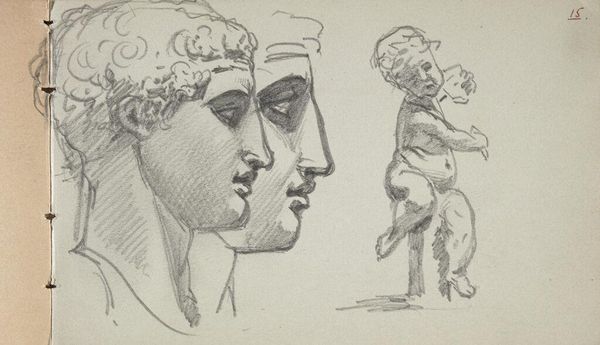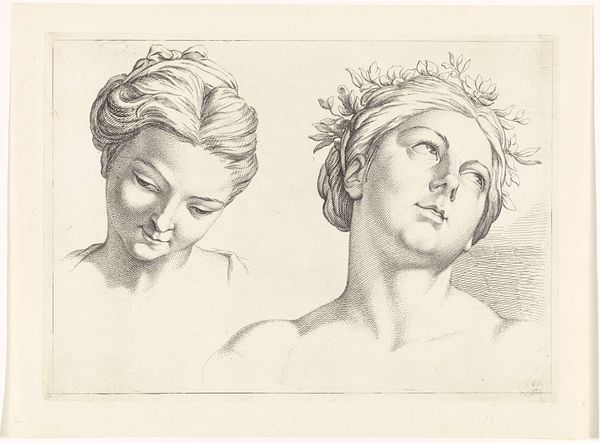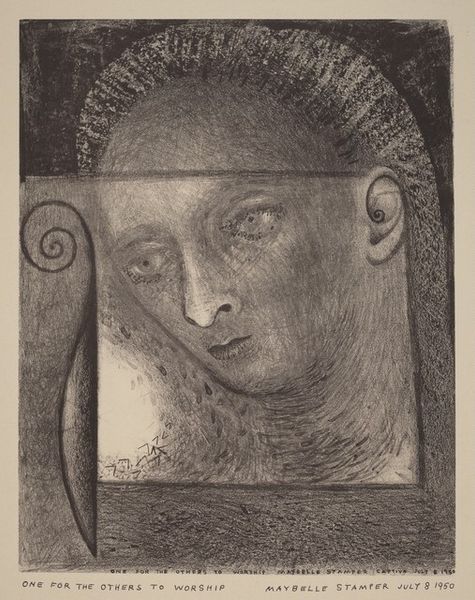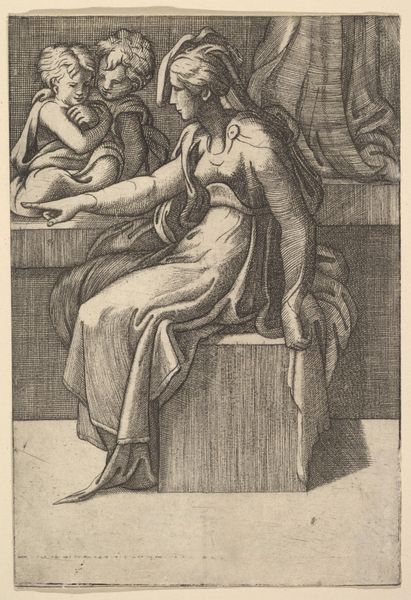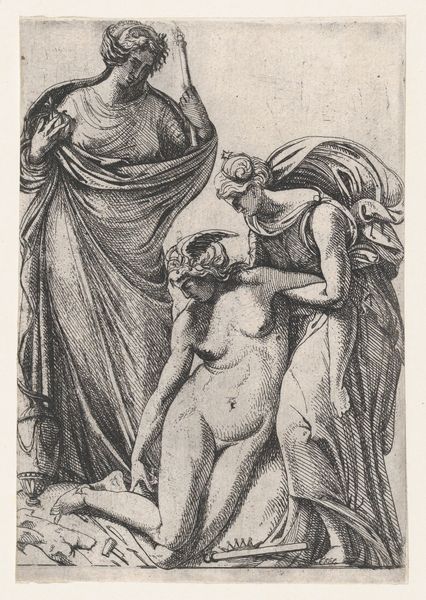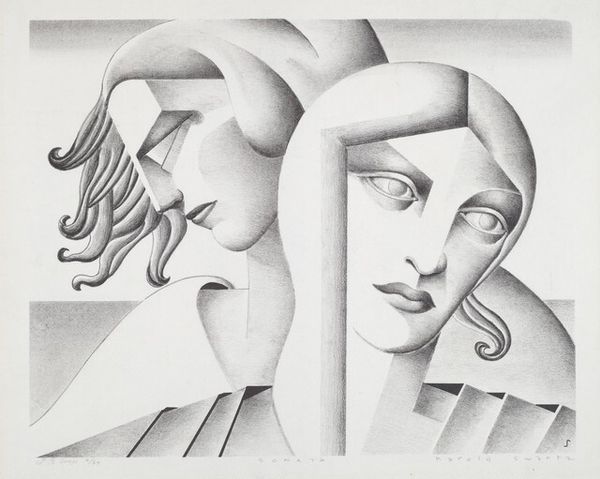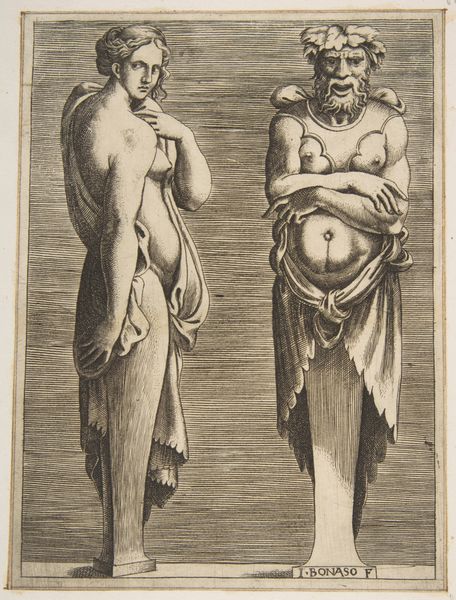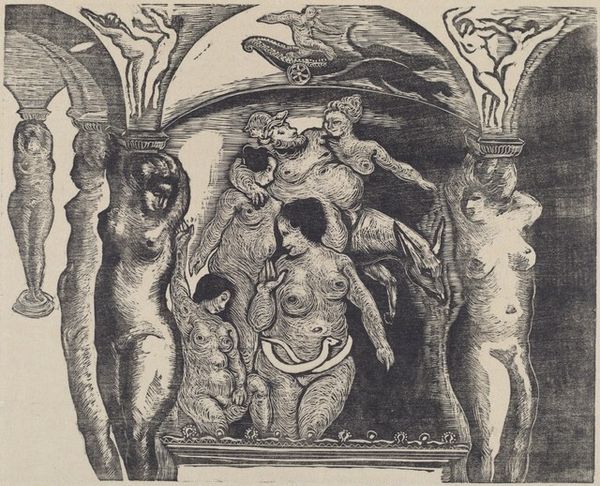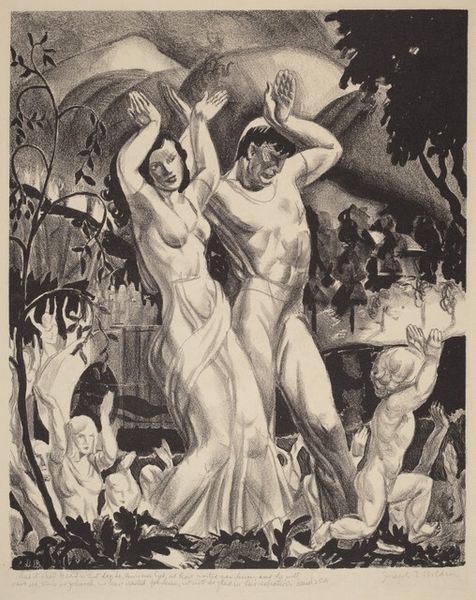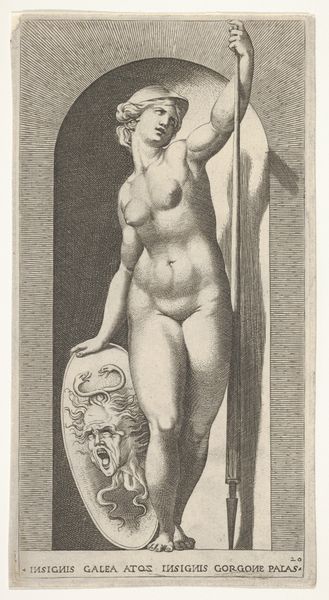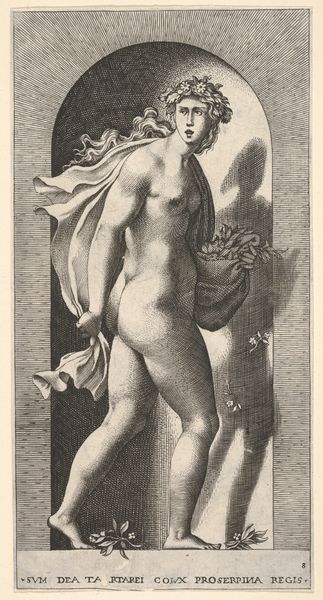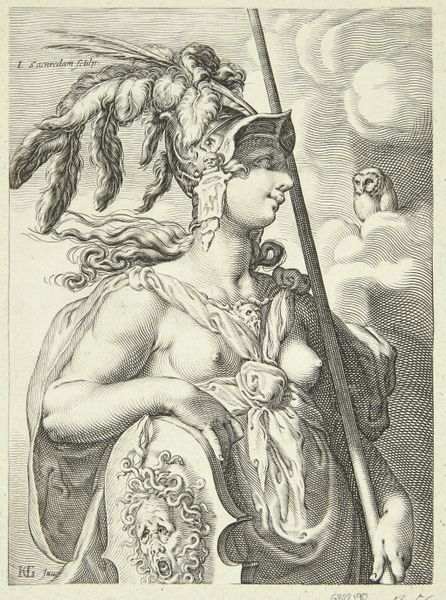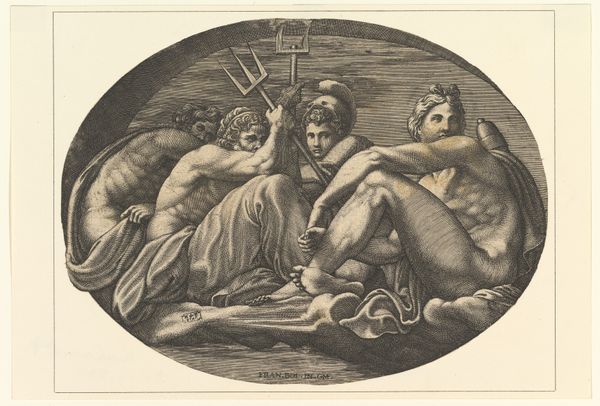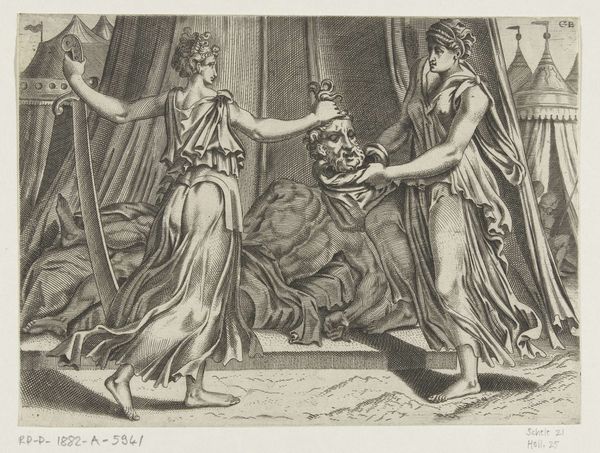
El Nacimiento de la Vista en la Obscuridad de la Noche (The Birth of Sight in the Dark of Night) 1936
0:00
0:00
drawing, pencil
#
portrait
#
pencil drawn
#
drawing
#
figuration
#
pencil drawing
#
pencil
#
portrait drawing
#
surrealism
#
modernism
Dimensions: sheet: 30.32 × 40.16 cm (11 15/16 × 15 13/16 in.)
Copyright: National Gallery of Art: CC0 1.0
Curator: What hits me first is this overwhelming feeling of poised anticipation, a pregnant silence just before... well, something's about to give birth, right? There's almost a claustrophobic quietude here, despite the open landscape. Editor: Indeed. Federico Castellón created this drawing, “The Birth of Sight in the Dark of Night,” in 1936. Castellón, a Spanish-American artist, is primarily known for his contributions to the Surrealist and Modernist movements. He skillfully crafted this work with pencil on paper, a rather classic choice that amplifies the intricate details and tonal range. Curator: "Birth of Sight"—now, doesn’t that just unlock it all? I was half expecting a madonna, but instead we have this double portrait where sight isn’t about observation; it's an almost violent tearing away of illusion. I see defiance—perhaps, or certainly revelation. I also can’t get over the surreal landscape… that odd, truncated tree. Editor: Absolutely. Castellón's personal experiences, especially his exile during the Spanish Civil War, deeply impacted his artistic vision, informing recurring themes of displacement, transformation, and psychic exploration. His work engages with those complex historical and political environments. Take the hand proffering the seeing eye—quite a blatant symbol. Curator: Ha! Well, I do love blatant sometimes! There's almost a ritualistic offering happening. And this abstract... bowl... thing in the other figure’s hands? That really screams unconscious void to me. You know, a hollow where old perceptions once were, now empty, awaiting something new. The rigid poses also really enforce this stiff yet still spiritual quality that the artist renders with great care. Editor: Castellón synthesized aspects of social commentary with dream-like imagery, influencing debates about identity and the search for authenticity in a modernizing, often dehumanizing, world. Notice how these two characters in the artwork are staged indoors, looking out upon a desolate landscape. Curator: Which I’d argue enhances this stark and beautiful loneliness! There’s something undeniably stark in Castellón's landscape but still, even now, intimate and lovely. It makes me feel as though I know the sitters personally and understand what these abstract visions could represent for the artist's innermost spirit. Editor: In conclusion, considering the socio-political landscape surrounding “The Birth of Sight in the Dark of Night” truly does open a rich layer of meaning, encouraging deeper contemplation on personal renewal within broader struggles of cultural upheaval and a longing to look inward.
Comments
No comments
Be the first to comment and join the conversation on the ultimate creative platform.
